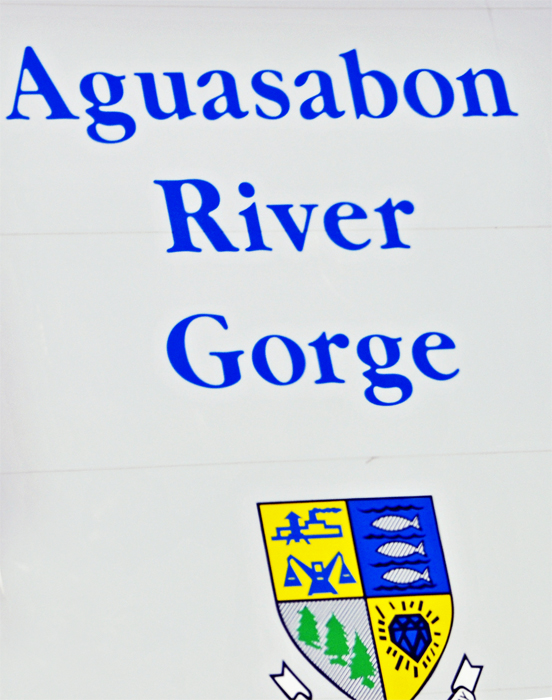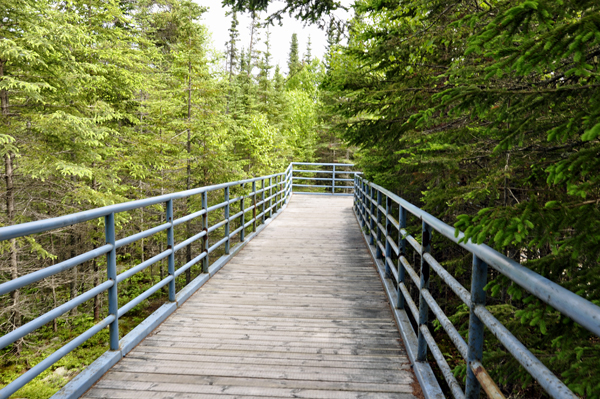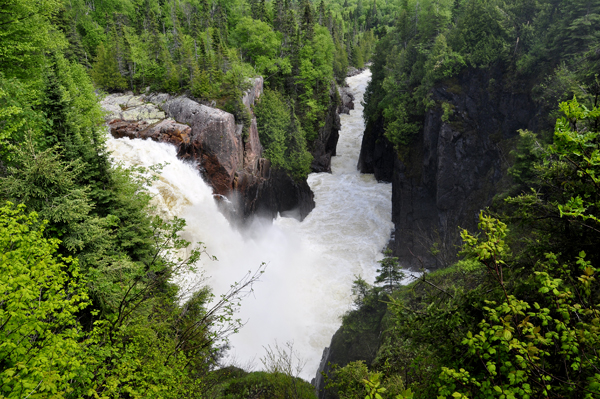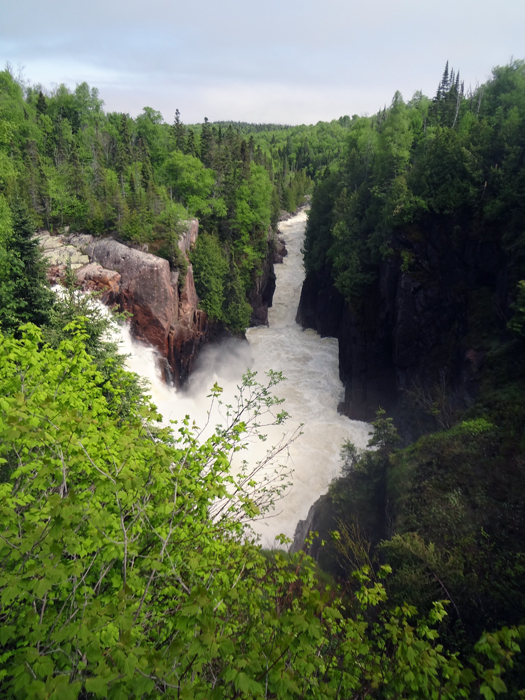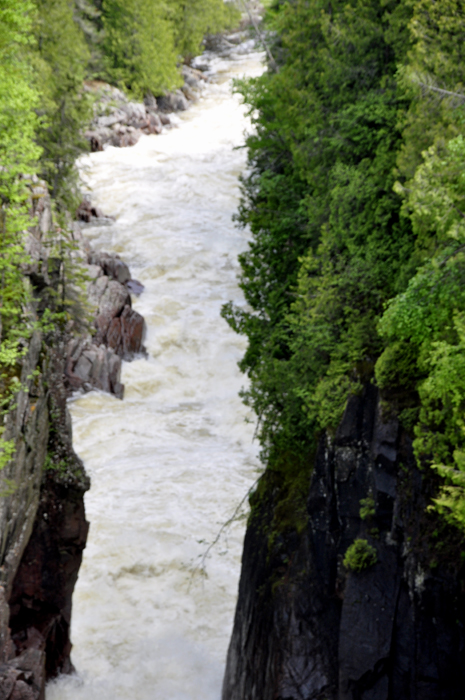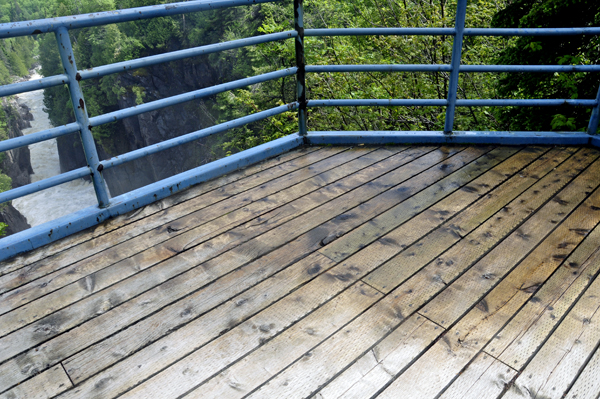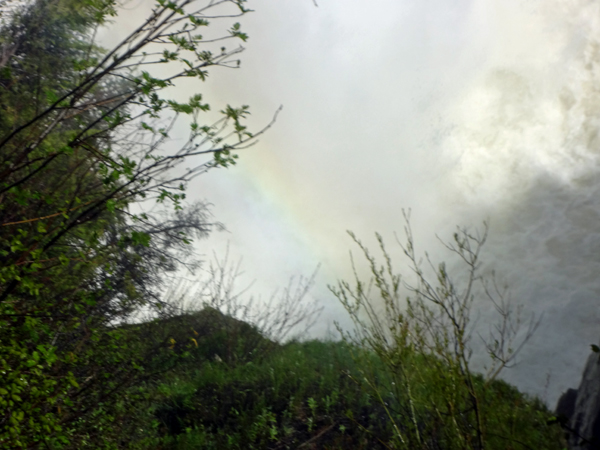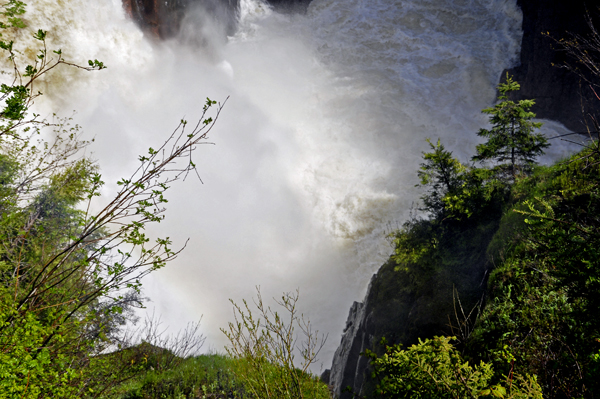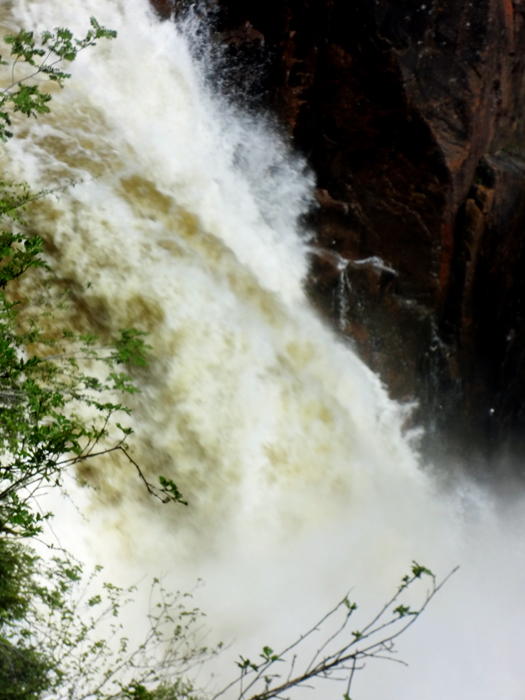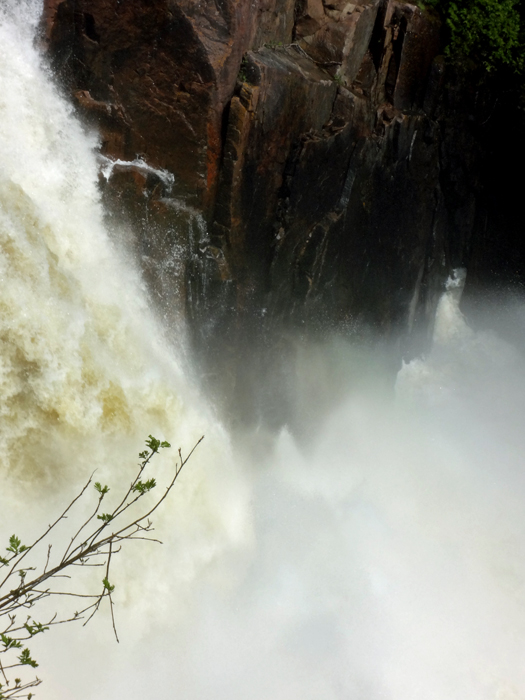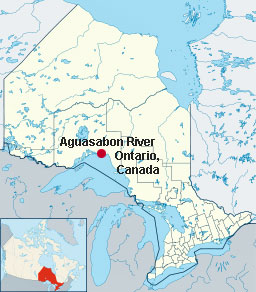
|
Lee and Karen Duquette,
The Two RV Gypsies: Full-Time RVers
at Aguasabon River Gorge
Terrace Bay, Ontario, Canada
June 24, 2013 |
The Aguasabon River is a river in Thunder Bay District, Ontario, Canada. The river originates at Chorus Lake and empties into Lake Superior near the community of Terrace Bay.
The Aguasabon is 43miles in length, and plunges down 100feet at the Aguasabon Falls. The river follows fractures in the 2.6 billion-year-old bedrock, and the exposed rock is granodiorite. |
|
The turnoff to the Aguasabon River Gorge is located just west of the Aguasabon
River Highway at the west end of the town of Terrace Bay. Parking and
viewing areas are found at the end of the road, a few hundred meters
south of the highway. There is a wheel-chair-accessible boardwalk that
leads to the observation deck. |
|
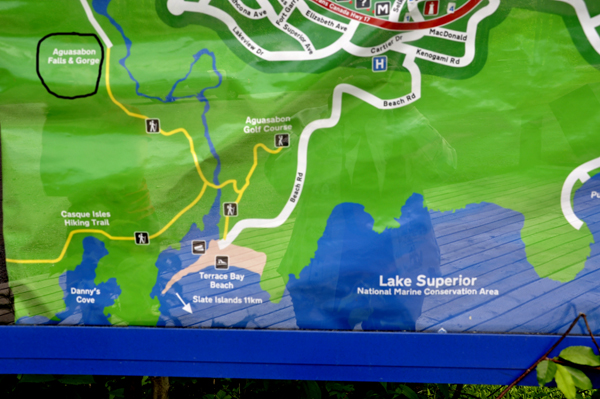 |
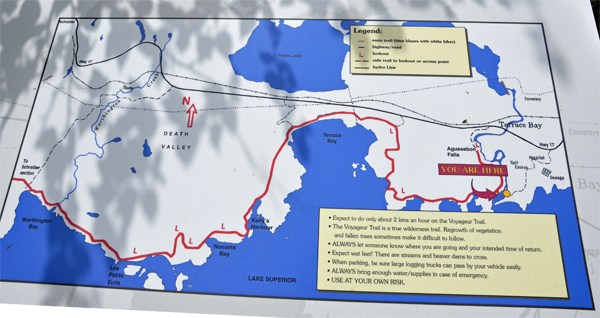 |
Below: From the observation deck, the two RV Gypsies watched the Aguasabon River plummet 30 metres over a narrow waterfall and make a sharp turn to flow through a deep rock gorge towards Lake Superior. In the spring, a dam located upstream along the river is opened, swelling the river and enhancing the spectacular waterfall.
The rock at the waterfall is granodiorite. An igneous rock similar to granite in appearance and composition. It is approximately 2.60 billion years old. The river has eroded its channel along regular fractures or joints in the bedrock, resulting in the sharp turn in the gorge. |
|
|
The photo below on the right is a zoomed-in view of the upper part of the photo on the left. The water was so strong, that it was flowing actually Upwards! |
|
|
Below: The
water was flowing down the dam so strongly, that the viewing deck got
wet from the mist. |
|
|
Below: A
beautiful rainbow at Aguasabon River Gorge and very powerful water flowing
downward. |
|
|
|
|
Aguasabon Station is a dam with two unit hydroelectric power plants run by Ontario Power Generation. It generates power to support a Kimberly-Clark pulp and paper plant at Terrace Bay.
In 1945, the Hydro-Electric Power Commission of Ontario began preliminary survey work for a planned hydroelectric facility in the Terrace Bay area. Construction commenced in 1946 and the facility began operating in 1948. The development required five million hours of labor, a network of access roads, and the erection of 25 buildings including staff housing, a hospital, administration office, pump house, machine shops and laundry. The dam enlarged Hays Lake to five hundred times its original size, and forced the relocation of Ontario Highway 17, requiring a new bridge be constructed. As part of the project, the Hydro-Electric Power Commission of Ontario diverted the headwaters of the Kenogami River to flow south into Long Lake and into the Aguasabon River system to Lake Superior, rather than flowing north towards Hudson Bay via the Albany River. |

